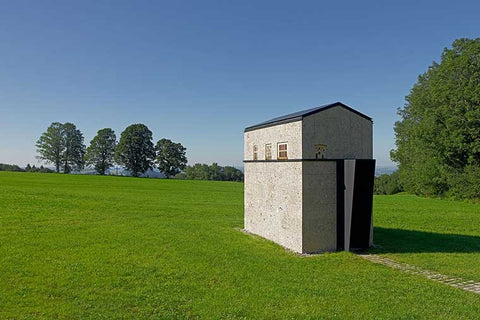
The Pulcina Espresso Maker by Michele de Lucchi for Alessi
Designed in conjunction with Italian espresso giant Illy, the pulcina series is a result of a fifteen year collaborative effort by Alessi to make a “moka for the new millennium.” The pulcina is a classic moka pot- meaning a coffee maker that produces coffee by pushing boiling water through coffee via steam pressure- a design first produced in the 1930s.
The difference is that the pulcina avoids the ‘strombolian phase’ of coffee extraction, which results in a bitter and burnt aftertaste. The strombolian phase was named by Luciano Navarini, et al, based on the resemblance of the sputtering finale of moka brewing to that of a volcano.
According to Navarini et al (Experimental Investigation of Steam Pressure Coffee Extraction in a Stove-top Coffee Maker, Applied Thermal Engineering (Impact Factor: 2.74). 04/2009; 29(5-6):998-1004) the sputtering end of the moka brew is bad because:
“High temperature extraction fluids (vapour, water and their mixture) transit in the coffee bed is noxious for the quality of the extract because, under these conditions, such fluids are more efficient in solubilizing less soluble compounds, generally conferring bitterness and astringency and/or in stripping least volatile aroma compounds which are organoleptically unpleasant and described as clove-like, smoky, burnt and medicinal/chemical.”
‘Organoleptically,’ incidentally, is a fancy way of saying “aspects of food that you experience via the senses”- in this case meaning, sight, smell, and taste.

The approach to solving the problem of nasty organoleptics lies within the Pulcina’s boiling chamber, which is bulbous- almost spherical. The air is pressurized before the water begins to boil, with the end result being a purer and more intense coffee flavor. The concave base of the boiling chamber also helps to prevent the strombolian effect from occurring. The stepped appearance of the walls of the moka aids the process of heating and cooling.
Alberto Alessi, Chairman of Alessi SpA, says: “For Illy and Alessi, making the best coffee and manufacturing the most appealing espresso coffeemakers are family pursuits. I think I may safely say that this coffeemaker is going to be a staple in the pursuit of optimization of form to improve the organoleptic properties of coffee prepared in a moka”.
Andrea Illy, Chairman and CEO of illycaffè, says: “This moka perfectly interprets the passion for excellence that has always set apart the Alessi and illy brands. It will help increase the popularity of this method of brewing espresso, the veritable worldwide symbol of Italian living.”
About the designer. Michele de Lucci:
A prominent philosophical mind behind modern architecture and design, Michele de Lucchi has been instrumental in the more “radical” design movements such as Alchimia and Memphis. His own company, Produzione Privata, may also be considered radical, I suppose, since de Lucchi has placed emphasis on handmade simplicity, rather than complex CNC-driven design processes, etc. The reality, of course, is that he is simply a very, very good designer and, perhaps, an even better architect.
According to de Lucchi:

“It’s called Pulcina because I designed it in the Chioso where my private studio is located. There, I work alone making my small sculptures and doing my little drawings. Originally the Chioso was a large chicken coop with many hens, roosters and chicks. An epidemic in the year that I was born caused them all to die, so in a sense, I can say that I was the only chick that survived. Independent of gender, all chicks are called ‘pulcino’ in Italian, using the masculine form whereas a coffeemaker- caffettiera- is feminine, which would make it the sole female. Hence the name: Pulcina.”
The Pulcina is made from cast aluminum with a polyamide handle in red or black. It is available in 3 sizes: 1 cup (2.5 oz), 3 cup (5.25 oz), and 6 cup (10.5 oz). The spout is reminiscent of a chick’s beak, of course.
Now available at amusespot.com
 ST. JAKOB’S CHAPEL, Michele de Lucchi
ST. JAKOB’S CHAPEL, Michele de Lucchi
AUERBERG, FISCHBACHAU, GERMANY, 2010-2013


